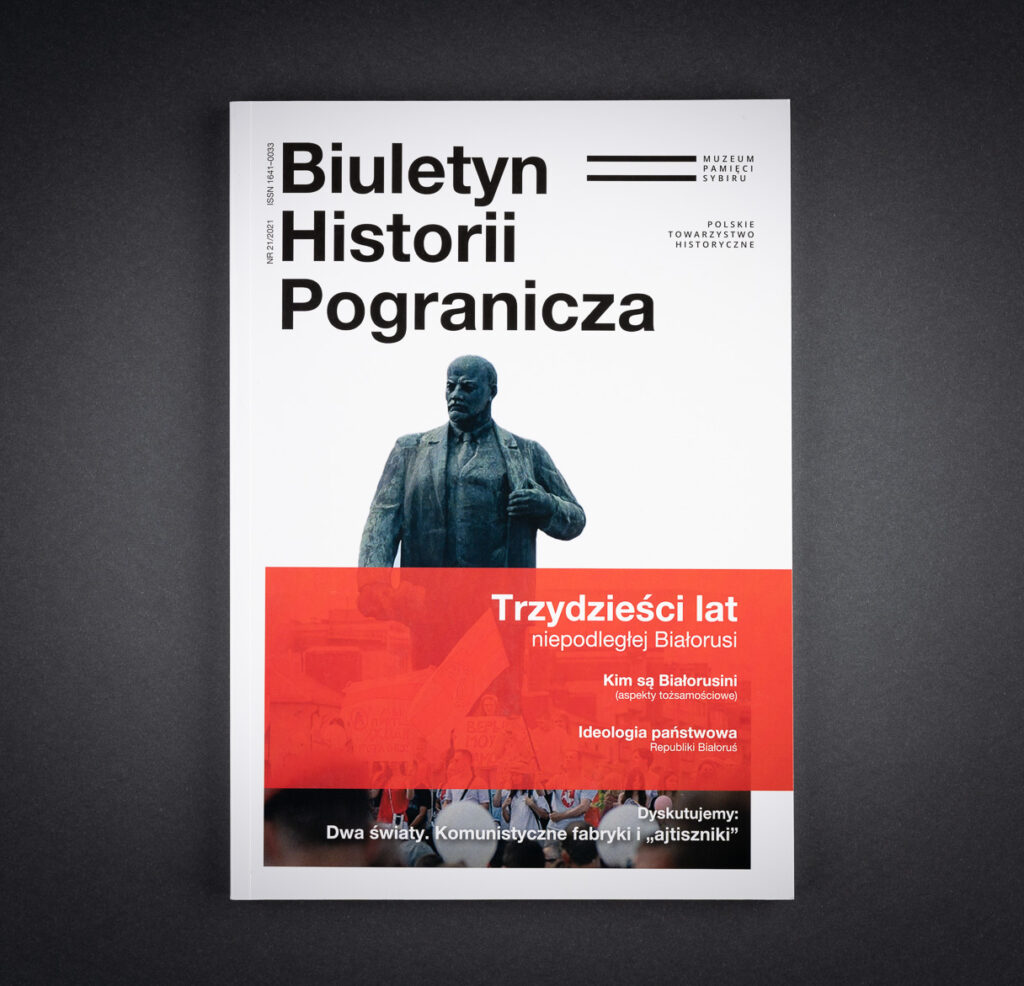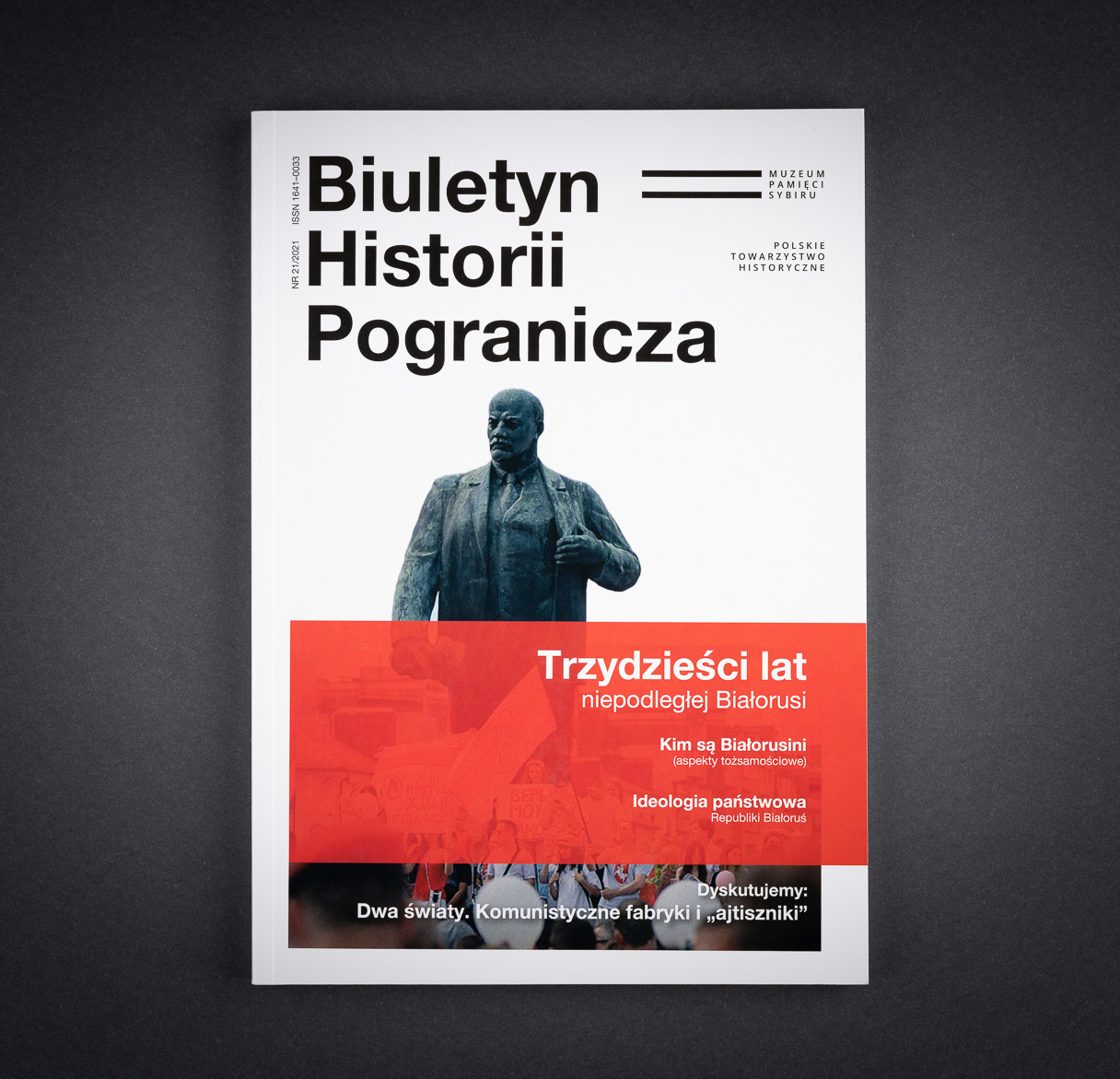
Twenty years ago the scientific community in Bialystok came up with the idea of creating a journal dealing with the history of the historical area of the Grand Duchy of Lithuania. The originator and the creator of “Biuletyn Historii Pogranicza” (“Borderlands History Bulletin”), Jan Jerzy Milewski PhD, wrote in the first issue of the journal: “The idea of the bulletin was born from the need of getting to know better the actual achievements of historiography and research […],and striving to present the latest studies on an ongoing basis. […] the articles should become a place of discussion for historians of three (and maybe not only) neighboring countries, which will contribute to a better understanding of the common history, and thus to bring societies closer together.” For the next eighteen issues, the “Biuletyn Historii Pogranicza” (“Borderlands History Bulletin”) successfully played the role assigned to it, being the place of Polish, Lithuanian, Belarusian and Russian discussions. It also maintained its own, the same graphic design from the very beginning. However, time goes by inexorably. The aesthetic sensitivity of recipients is changing, as are the conditions for conducting scientific activity. Despite these changes, “Biuletyn Historii Pogranicza” (“Borderlands History Bulletin”) invariably remains a space where the history of the borderland is described in terms of geography, society and culture; a forum where different ways of looking at common history continue to permeate.
From the nineteenth issue, the publisher of “Biuletyn Historii Pogranicza” (“Borderlands History Bulletin”) — together with the Bialystok branch of the Polish Historical Society — is also the Sybir Memorial Museum, an institution which, apart from aspects related to exhibition issues, has the ambition to become an international forum for historical discussion. The main part of the mission of the Sybir Memorial Museum is -— apart from discovering and disseminating knowledge related to the subject of deportation and the fate of Poles in Russia and the Soviet Union — also researching the living conditions of the Polish community in the eastern territories of the former Polish Republic. The aim of the Museum’s activity is to tackle difficult topics, both from the museum and scientific point of view. Through the organized conferences, seminars and discussion panels as well as numerous publications, the Sybir Memorial Museum creates a platform for the exchange of ideas and consultations open to the domestic and foreign community of museum workers and historians.
The graphic design of “Biuletyn Historii Pogranicza” (“Borderlands History Bulletin”) has changed, a new publisher has joined, but the formula of the international borderland journal has remained open to discussion.
ABOUT THE JOURNAL
- Scientific disciplines: humanities and social sciences,
- Publication languages: Polish, Belarusian, Lithuanian, Russian, English,
- Frequency: year,
- Availability: printed version, online,
- Circulation: 1000 copies,
- Number of points on the list of scientific journals: 40 points,
- The journal is indexed in scientific databases: Science Library, CEJSH,
- Articles are published in the Studies and Articles Section have digital object identifiers (DOI)
- Affiliations: Polish Historical Society, the Sybir Memorial Museum.
ETHICAL STANDARDS
The journal “Biuletyn Historii Pogranicza” (“Borderlands History Bulletin”) publishes articles based on ethical principles in accordance with the guidelines issued by the Committee on Publication Ethics (COPE).

ANTI-PLAGIARISM POLICY
The journal has a plagiarism control policy. Authors may submit for publication only their own original articles that have not been previously published in whole or in part. Authors guarantee that each article submitted for review has not been previously submitted for publication in another publishing house. The responsibility for securing the copyrights and editorial rights of the photos, diagrams and figures sent for use rests with Authors. The Editorial Board emphasizes that all detected cases of unethical behavior will be disclosed, including notification of relevant entities.
Prevention of scientific misuse
In order to exclude any scientific abuses, the Editorial Board has implemented appropriate procedures. The phenomenon of the so-called ghostwriting takes place, when someone has made a significant contribution to the creation of an article, but its role has not been disclosed. The phenomenon of the so-called guest autorship occurs when the contribution of the named Author is negligible or even non-existent, even though his name is listed as the Author or Co-author. The aforementioned phenomena will be considered by the Editorial Board as manifestations of the authors’ scientific misconduct, and any detected cases of such activities will be disclosed, including notification of relevant entities. Editors will require information on Authors ‘contributions to the production of an article, and in the absence of information on unequal Authors’ contributions, the contribution is assumed to be equal. Editors will receive information about the sources of financing publications, contributions from research institutions and other entities.
License
The copyright and self-archiving rules are defined in BOAI:
Authors of the published texts will not charge any fees for the processing or publication of an article. Conditions regulation based on the license: Creative Commons Attribution (CC BY).
Sharing (Open Access)
“Biuletyn Historii Pogranicza” (“Borderlands History Bulletin”) is an open-access journal, which means that all content is available to an user or institution, both in paper form and on the journal’s website. Users can read, download, copy, distribute, print, search or post links to full text journal articles without the prior consent of the Publisher or the Author subject to terms based on the Creative Commons Attribution (CC BY) license. Authors of the texts will not charge for the processing or publication of the article. Authors retain copyright without restriction.



